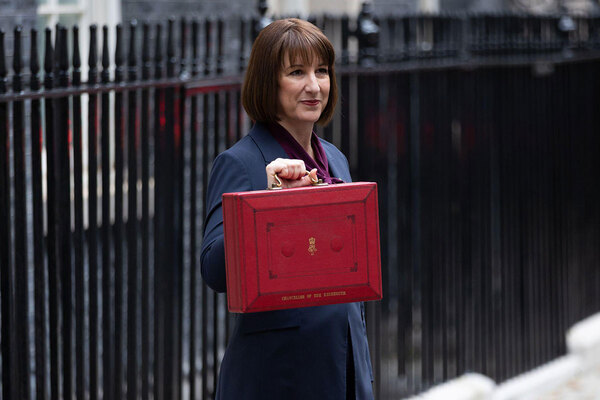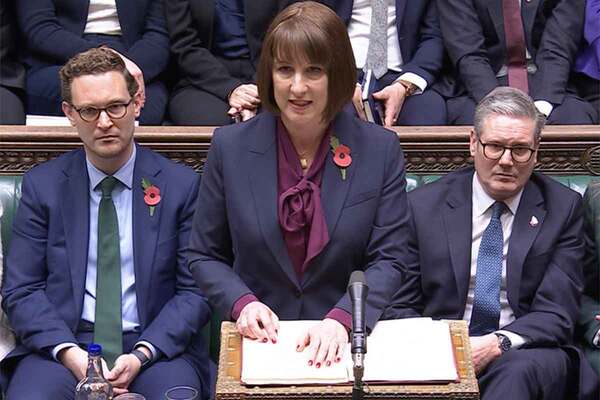Macroeconomic factors cause mixed picture for sector borrowing costs
Macroeconomic factors have led to a mixed picture for the cost of borrowing for housing associations during a packed week of events on the UK and global stage.
On 30 October, Rachel Reeves unveiled her first Budget as chancellor. This included a range of housing announcements, such as a consultation on a new rent settlement of “at least” five years and a £500m top-up to the Affordable Homes Programme, as well as a rise in employers’ National Insurance contributions from 13.8 per cent to 15 per cent alongside a lowering of the threshold at which they kick in.
Then, the US election on 5 November saw Donald Trump win his second term as US president and yesterday (7 November) the Bank of England cut its base rate from five to 4.75 per cent.
Speaking to Social Housing, John Tattersall, managing director of Centrus, pointed to an increase in the cost of long-term borrowing following last week’s Budget.
“The Budget pushed gilt yields up by 10 to 15 basis points (bps) across the curve, swaps went up as well, but by a little less, but, in general, borrowing costs went up for most [registered providers],” he said.
Mr Tattersall said the US election had “so far had a more muted impact” on borrowing costs.
“Over the week, gilts and swaps were up by less than 5bps, if with lots of volatility,” he said.
Referring to the Bank of England’s 7 November rate cut, Mr Tattersall said: “Today’s rate cut has similarly had a modest impact, with short-term rates down 0-5bps and no impact on longer tenors, suggesting markets largely expected the cut, and the narrative that future cuts will be slower – a point suggested in the Budget.”
He added: “Borrowing costs are now higher than we have seen for a long time. Today the 30-year gilt just beat the peak seen in the immediate aftermath of the Liz Truss Mini Budget. This has a real impact on investment.”
James Tarrant, director of Savills Financial Consultants, said that initial market reaction from the Budget announcement was “positive”, albeit when the Office for Budget Responsibility released its updated economic and fiscal outlooks, there was “a significant steepening of gilt yields and the swap curve”.
He said: “The gilt issuance remit was significantly higher than markets expected – skewed to the long end, leading to curve-steepening, particularly at the long end. Additionally, impact on certain measures on stickiness of inflation was closely monitored.
“Credit spreads have remained resilient and saw limited movement post-Budget and post-Trump’s victory, although both the gilt and swaps markets have moved significantly, which has elevated the all-in cost of funding.”
Mr Tarrant said the US Treasury curve and swap rates had “steepened and there has been a spillover effect in the GBP market” following the US election.
Speaking yesterday, Mr Tarrant said markets were still “overwhelmingly pricing in” a 25bps cut for the Federal Open Market Committee later in the day, which was “99.8 per cent” priced into markets and would follow the earlier 25bps cut from the Bank of England.
Mr Tarrant said: “As the market digests the news, the focus will be on the inflationary impact of Trump policies.
“If the market perceives this as inflationary, then this may lead to higher rates and steeper curves.”
However, Mr Tarrant said the Bank of England’s base rate cut was a “positive news story” for the sector. Eight out of nine committee members voted for the quarter of a percentage point cut.
“The 8-1 vote was a clear signal, albeit there was a clear message that gradual easing is ahead, meaning rates are likely to stay higher for longer,” he said.
“Given housing associations (HAs) have been borrowing predominantly from the banking market in recent months, this will provide some welcome relief in terms of borrowing costs in the short term. The focus will now be very much on the future trajectory of rate cuts, with inflation being a key barometer that the Monetary Policy Committee will be watching closely and will dictate how long it takes for rates to move lower.”
Mr Tarrant said investors still had “strong appetite” for the sector, so news of macroeconomic events don’t necessarily change the investor appetite or impact whether HAs are in better or worse positions to issue debt.
“That being said, rates remain significantly elevated, which has adversely impacted borrowing costs. Strategically assessing funding markets and options is critical to evidence and ensure value for money in all funding projects,” he added.
The Regulator of Social Housing previously highlighted that appetite for investment in the sector remained strong. Speaking at an event in September, Jonathan Walters, deputy chief executive of the regulator, said he understood from regular talks with investors, as well as trade association UK Finance, that there remained “significant desire” to put money into the sector.
Arun Poobalasingam, chief partnerships officer at The Housing Finance Corporation, said that while the cost of borrowing for long-term debt is higher at this moment in time, this could be different when housing associations go to market.
He said: “Rates have been a bit volatile, the Budget had an impact on the amount of debt issuance by the government, and Trump winning the US election has definitely caused a bit of volatility. The only certainty is there’s uncertainty at the moment.
“Rates are not going back to the one, two per cent era, and at the moment it’s pretty uncertain where they’re heading – whether they’re heading up or down.”
Other Budget announcements
Commenting on the wider impacts of announcements in the Budget on housing providers’ businesses, Centrus’s Mr Tattersall said: “There is additional grant, but the £500m set out is not a huge number in the context of developing housing in the UK. If the announced [Consumer Price Index] plus one per cent rent settlement for five years is confirmed, it is helpful in the sense that that gives stability for decision-making, but unfortunately, the National Insurance hit is going to cost quite a bit too.
“I think, if you’re an average 20,000-unit association, you’re probably looking at something in the region of £0.5m or more of extra operating costs for that; that’s not going to help.
“So even though there’s more grant available and rent stability may be seen, the viability of development has become a bit weaker again, creating a bit more of a headwind for the sector.”
Sign up for Social Housing’s weekly news bulletin
Social Housing’s weekly news bulletin delivers the latest news and insight across finance and funding, regulation and governance, policy and strategy, straight to your inbox. Meanwhile, news alerts bring you the biggest stories as they land.
Already have an account? Click here to manage your newsletters.
RELATED









